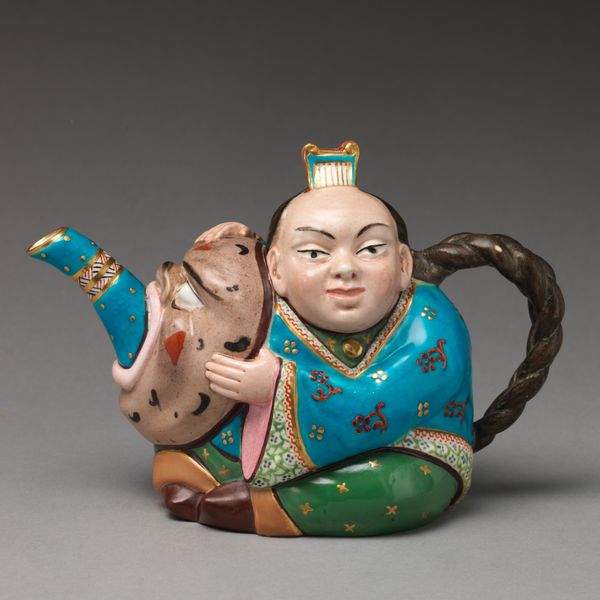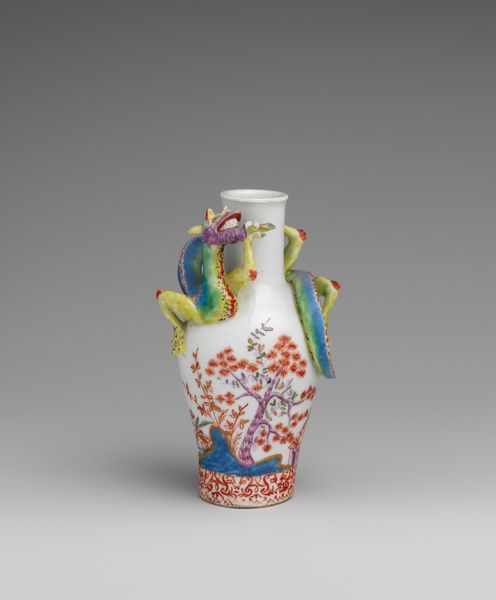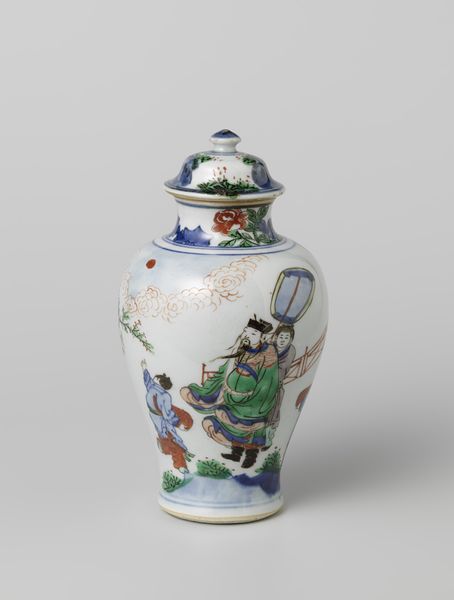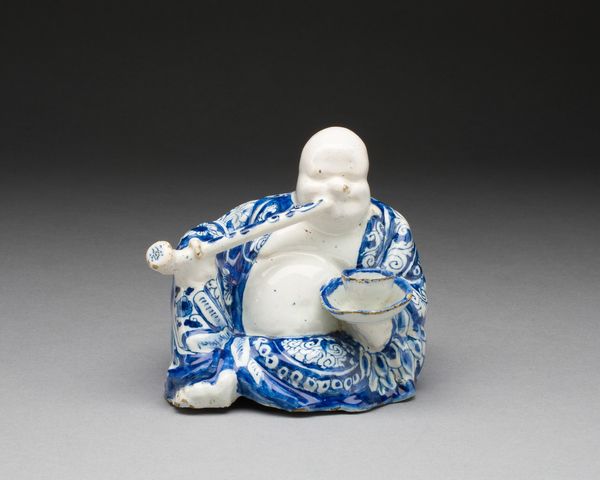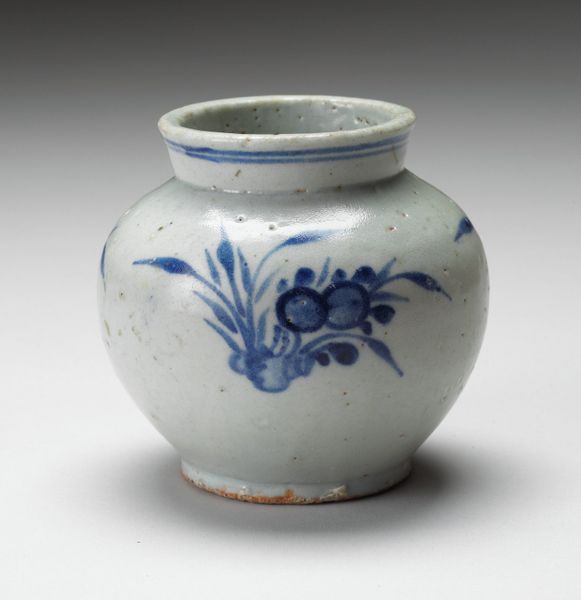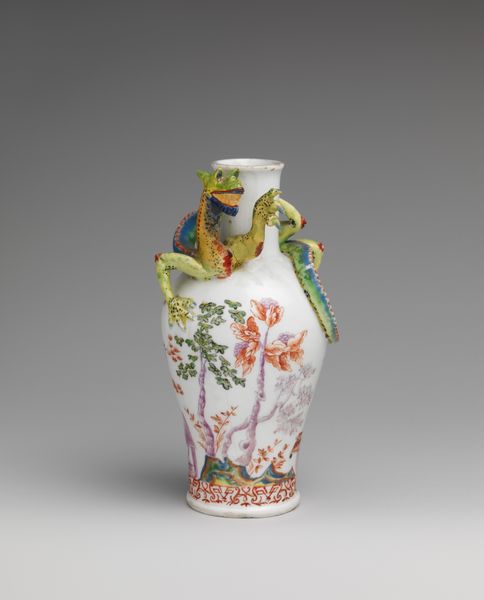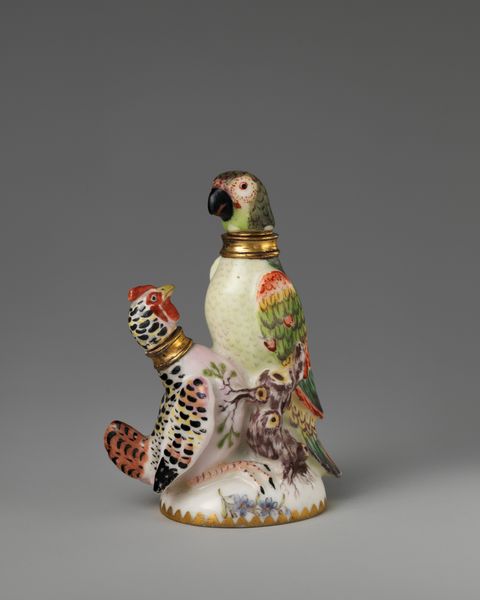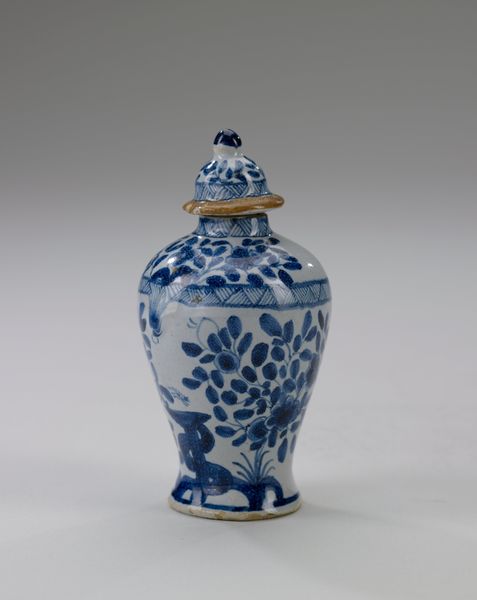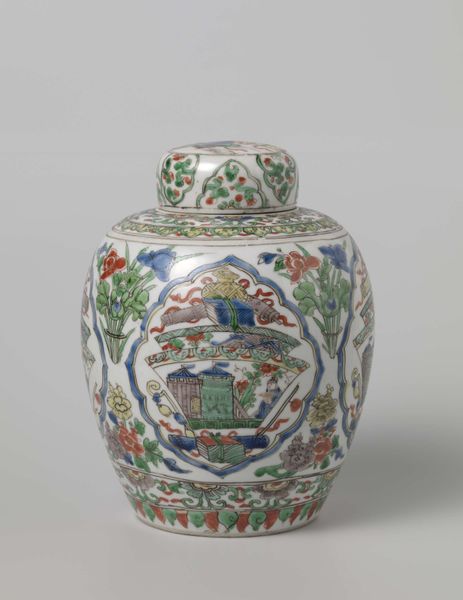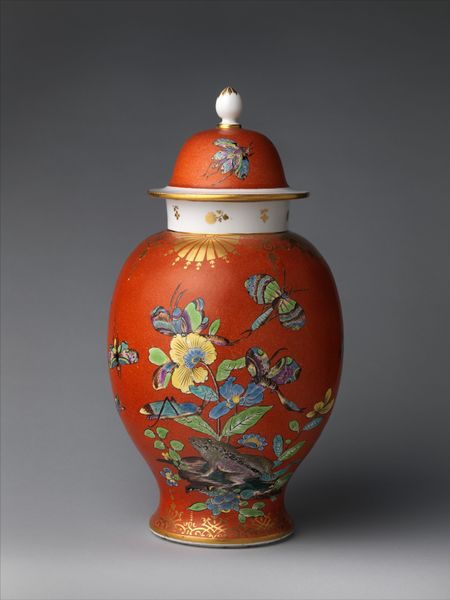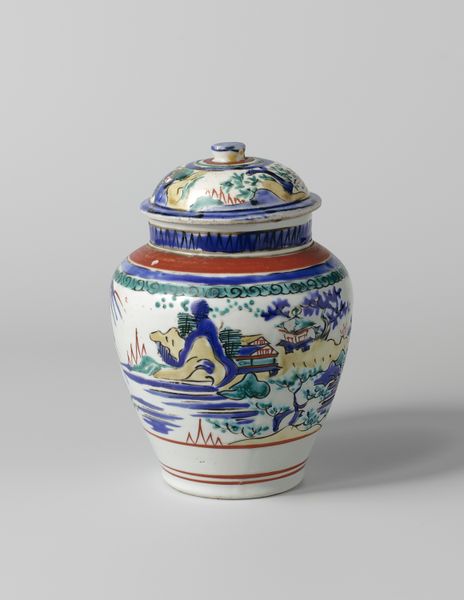
ceramic, sculpture, terracotta
#
sculpture
#
ceramic
#
figuration
#
sculpture
#
ceramic
#
terracotta
#
indigenous-americas
Dimensions: 6 1/2 x 3 1/2 in. (16.51 x 8.89 cm)
Copyright: Public Domain
Editor: Let's discuss this remarkable Chorotega ceramic figure, dating from around 300 to 799 AD. It resides here at the Minneapolis Institute of Art. There's such a stoic and enduring quality to its form. How do you interpret this work? Curator: Considering the piece's age and cultural context, it's crucial to explore what this figure might have represented within its community. Indigenous art from this period often served ritualistic purposes. Notice the detail of what seems to be a smaller figure held within the larger one's arm. What might that signify in relation to ideas about identity, power, or community structure within Chorotega society? Editor: That's a great point about the smaller figure. I hadn’t considered that it could be a representation of societal hierarchies or the passing of knowledge and status from one generation to another. Could it also represent something about the relationship between the individual and their ancestors? Curator: Absolutely. Given the material—ceramic—and its lasting nature, perhaps it embodies a deep connection with ancestral heritage and collective memory. Think about the position of this figure—raised on a platform—and what that means in terms of performativity or how it might have been displayed or used in ancient ceremonies. What are your thoughts on how this work connects to contemporary issues of indigenous representation? Editor: Well, looking at it now, I think that understanding works like these provides essential context for contemporary discussions about the preservation and appreciation of Indigenous cultures and their histories. This representation has endured. Curator: Precisely. The Chorotega Figure challenges us to reflect on how ancient artworks can foster a critical dialogue with current socio-political landscapes. Hopefully, through art history, we’ve learned to look deeper into ourselves and our relation to culture. Editor: I think so too, that’s the power of putting ancient art into conversation with the current era.
Comments
No comments
Be the first to comment and join the conversation on the ultimate creative platform.
